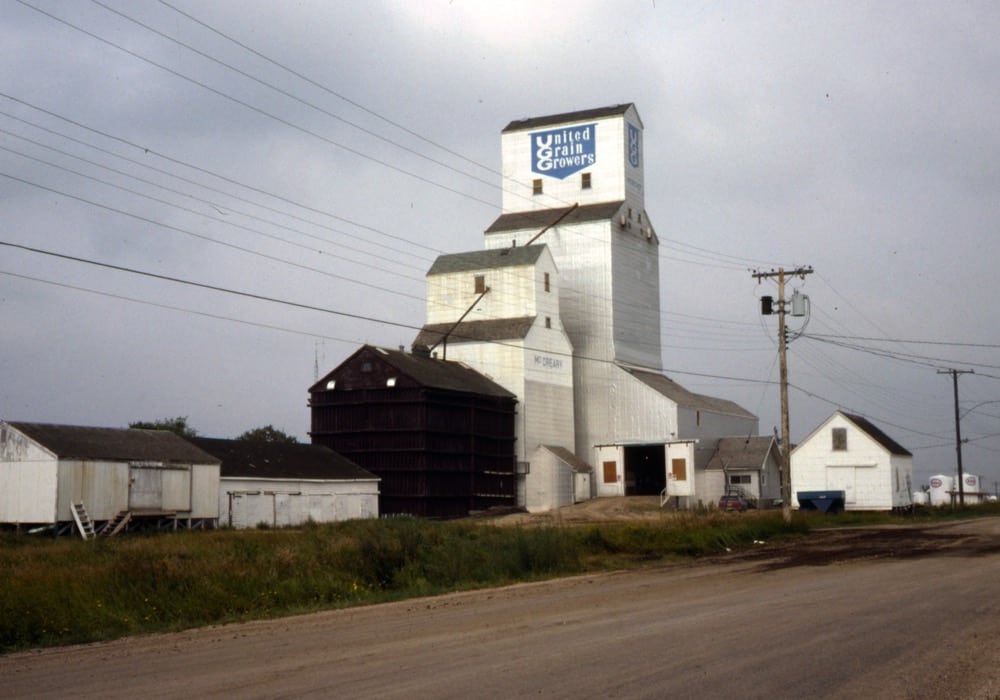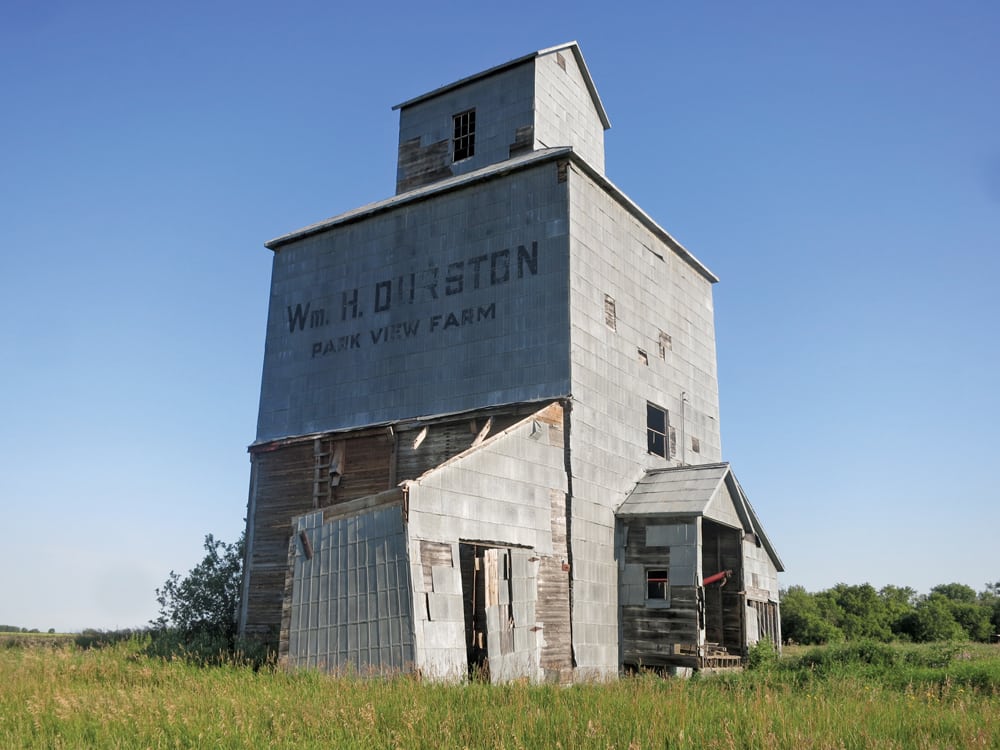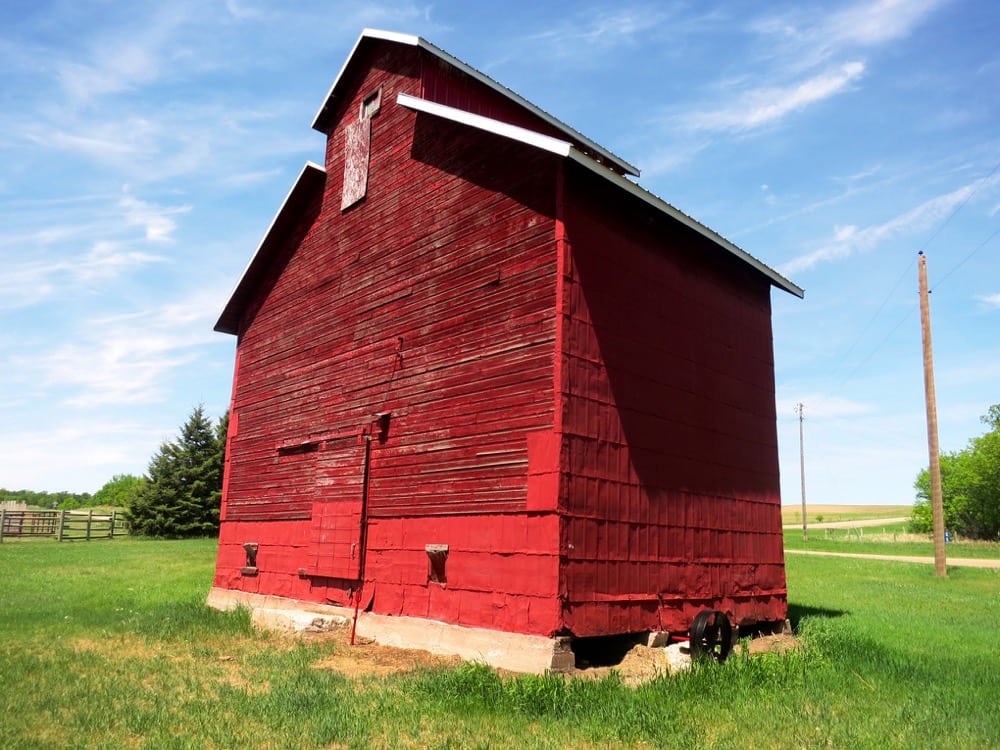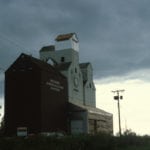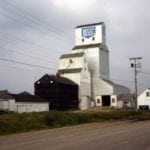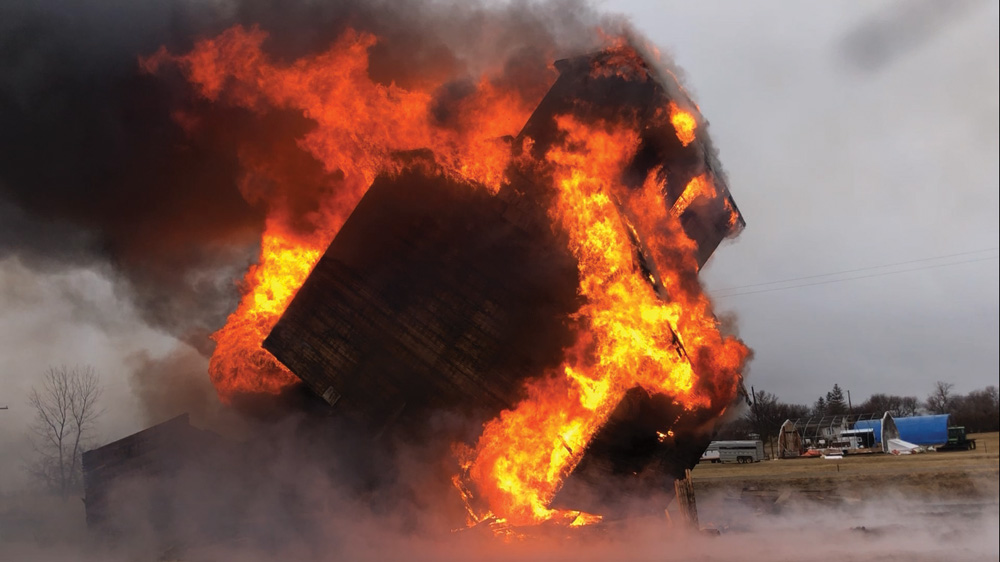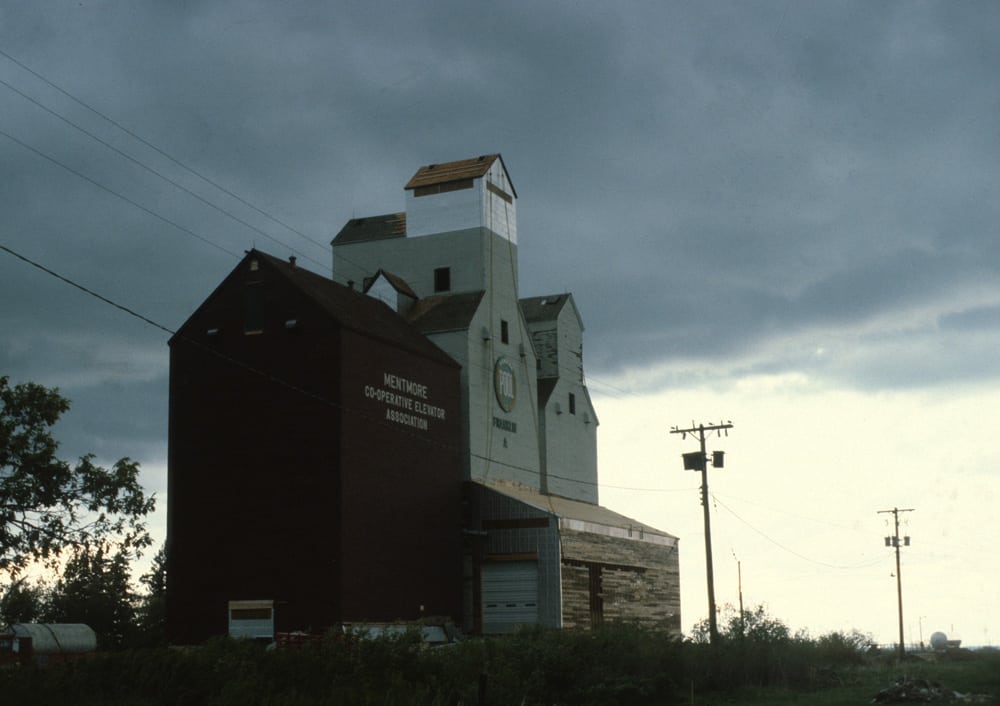
Franklin Pool.jpg
This photo from June 1981 shows a Manitoba Pool elevator at Franklin, northwest of Neepawa in the Rural Municipality of Rosedale, under renovation. The taller elevator was built in 1959 next to the shorter elevator from 1927. A balloon annex once stood to the right of the older elevator. The renovations in 1981 included a new office and larger driveshed, and installation of a metric scale. The crib annex at left, built in 1958, was moved here from Mentmore, 12 miles to the southeast. In 1991, the old elevator was demolished and replaced by three steel tanks. The 160,000-bushel elevator was closed in July 2000, following the opening by Agricore of a large, new facility at Minnedosa. The last elevator in the municipality was demolished in 2002.
Photo: S. J. McKee Archives, Brandon University
McCreary-UGG
The first United Grain Growers elevator at McCreary, with a 30,000-bushel capacity, opened in 1917. Two balloon annexes were added to its east side, next to the driveway, around 1951 and its capacity rose to 85,000 bushels. Around 1961, one of the balloon annexes was moved to the south side and enlarged. In 1977, the old elevator was converted into an annex and a new elevator was built beside it. When this photo was taken in 1981, the original elevator and its single balloon annex were about to be demolished. Steel tanks on the south and north sides were added around 1995, increasing the total capacity to 141,000 bushels. Closed in 2001, the elevator was sold into private ownership. At the time of a 2017 visit, it appeared to be disused except by many pigeons.
Photo: University of Manitoba Archives & Special Collections
Durston Elevator_cmyk.jpg
A small wooden elevator in the RM of Dauphin, three miles north of Riding Mountain National Park, was built by local farmer William Durston in 1917. Born in England in 1871, Durston came to Canada at the age of three and moved with his family to this area in 1889. He was the first farmer in the region to use a combine to harvest his crops and one of the first to grow legumes. The elevator is not in use and portions have fallen in the past few years.
Photo: Gordon Goldsborough, July 2017
Dobbin-Family-this-old-elevator-June2018
A small wooden-crib elevator in the Municipality of Norfolk Treherne, similar in design to Manitoba’s oldest elevator, at Elva, was built in 1901 by Irish immigrant William Twiss Grogan and his family. Local lore holds that it was built using lumber sawed from logs salvaged from a log-jam in the nearby Assiniboine River. It had four full-size bins and two half-bins. Sold to neighbour Alex Dobbin along with the surrounding land in 1911, the structure (seen here in May 2018) remains in good repair. It contains the original leg and is still used for grain storage by Dobbin’s descendants.
Photo: Gordon Goldsborough
In the 1950s, there were over 700 grain elevators in Manitoba. Today, there are fewer than 200. You can help to preserve the legacy of these disappearing “Prairie sentinels.”
The Manitoba Historical Society (MHS) is gathering information about all elevators that ever stood in Manitoba, regardless of their present status. Collaborating with the Manitoba Co-operator it is supplying these images of a grain elevator each week in hopes readers will be able to tell the society more about it, or any other elevator they know of.
MHS Gordon Goldsborough webmaster and Journal editor has developed a website to post your replies to a series of questions about elevators. The MHS is interested in all grain elevators that have served the farm community.
Read Also
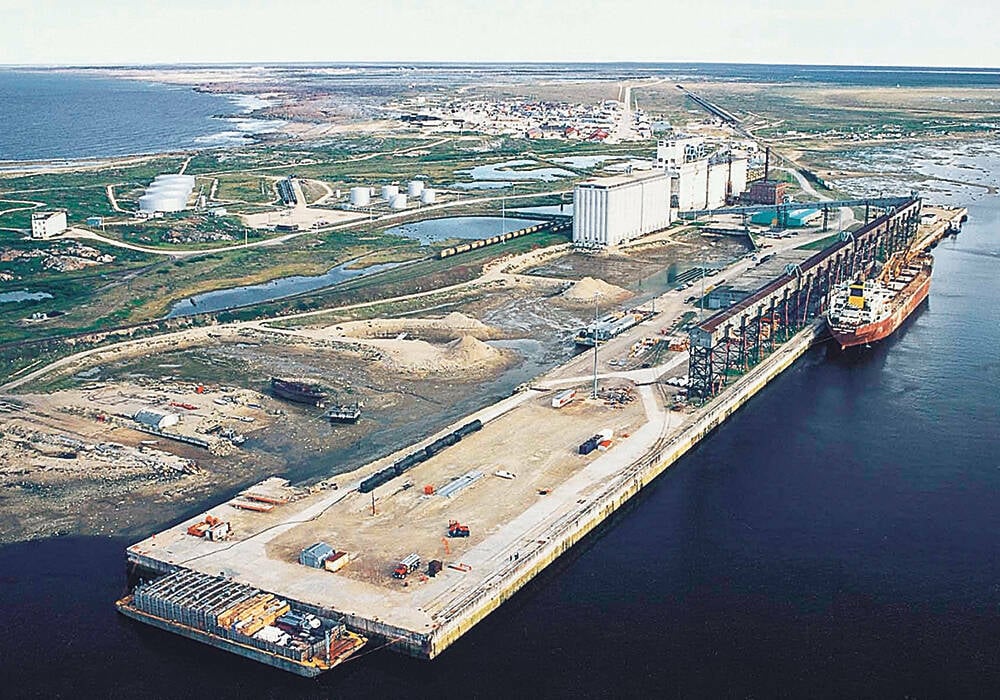
Port of Churchill revamp gathers pace
Canada’s Port of Churchill Plus update plan hopes to expand trade, including agriculture trade, at Manitoba’s Arctic sea port
Your contributions will help gather historical information such as present status of elevators, names of companies, owners and agents, rail lines, year elevators were built — and dates when they were torn down (if applicable).
There is room on the website to post personal recollections and stories related to grain elevators. The MHS presently also has only a partial list of all elevators that have been demolished. You can help by updating that list if you know of one not included on that list.
Your contributions are greatly appreciated and will help the MHS develop a comprehensive, searchable database to preserve the farm community’s collective knowledge of what was once a vast network of grain elevators across Manitoba.
Please contribute to This Old Grain Elevator website here.
You will receive a response, by email or phone call, confirming that your submission was received.
Goldsborough is interested in hearing all sorts of experiences about the elevators — funny, sad, or anything in between. Readers willing to share their stories can leave messages at 204-474-7469.

